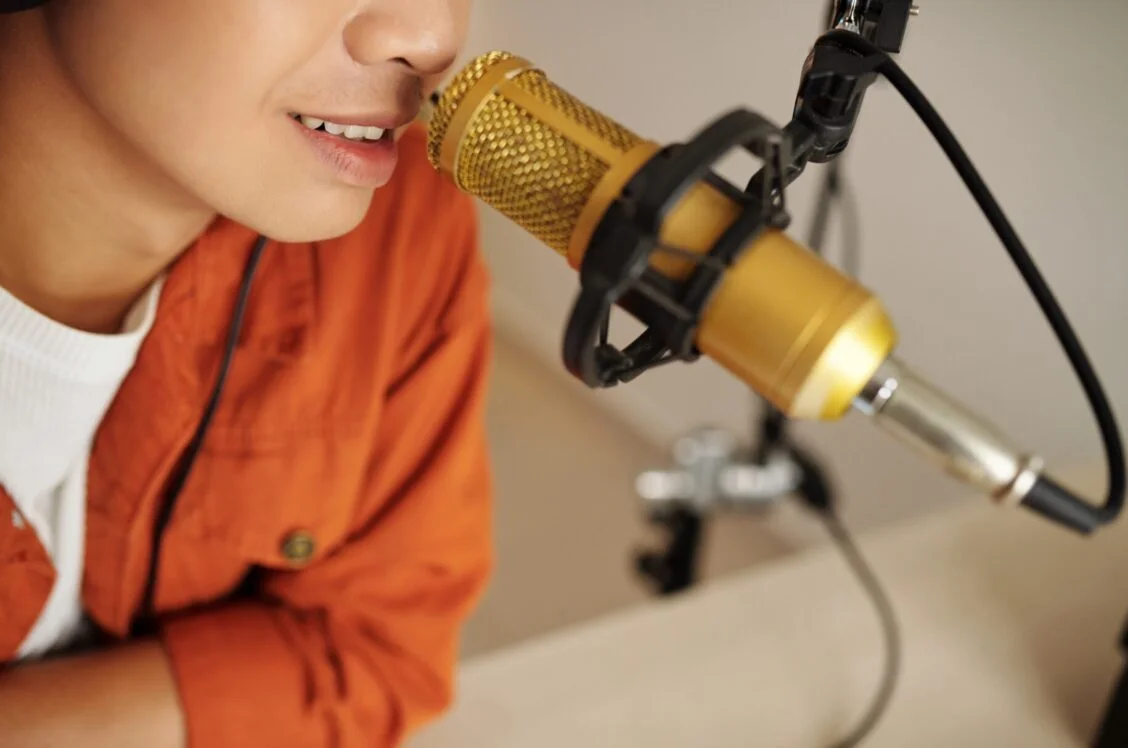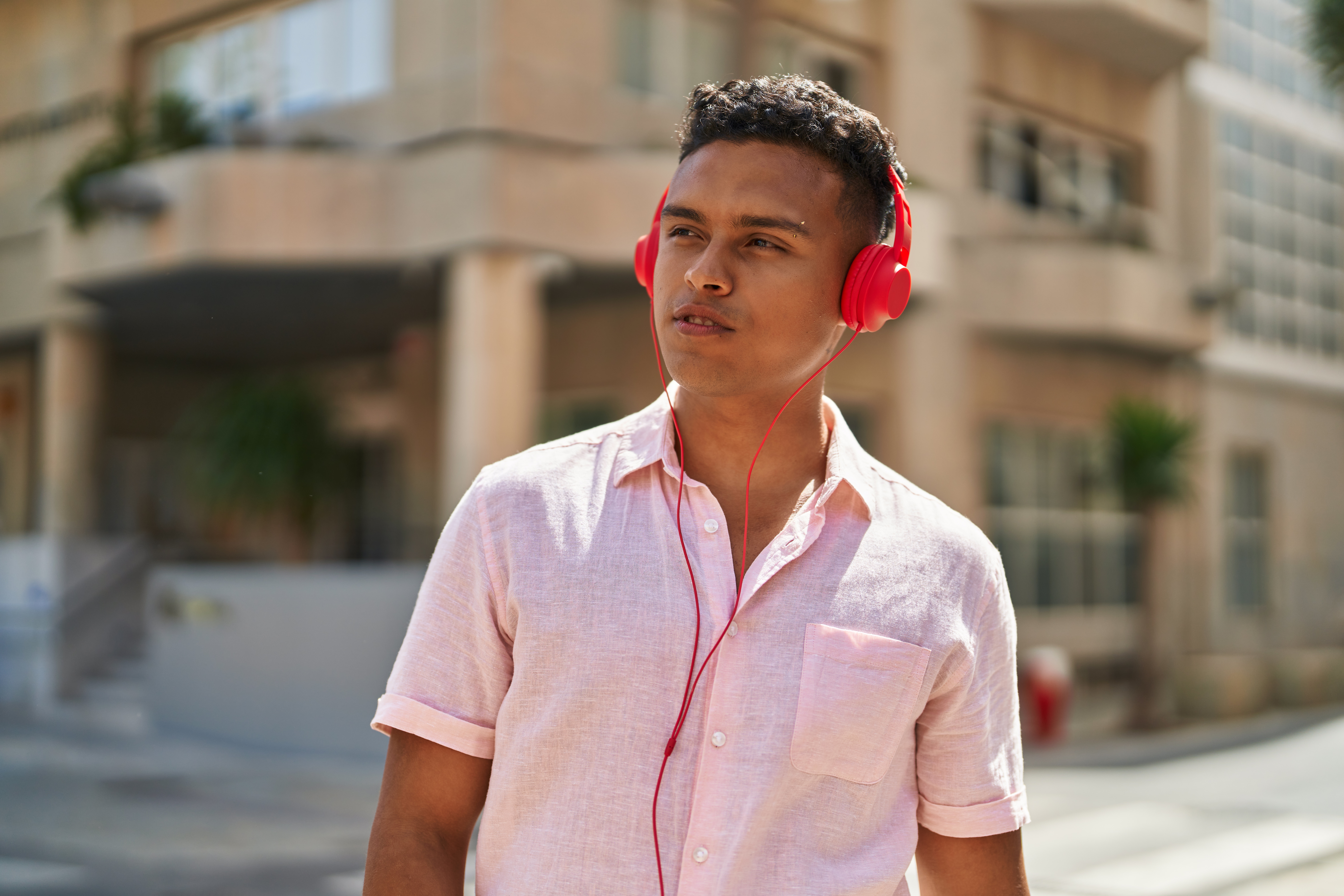
Autonomous sensory meridian response (ASMR) is the pleasant sensation that can be triggered by hearing certain evocative sounds such as whispering or paper crinkling. Many people feel tingly, soothed, or even mildly euphoric in response to hearing these sounds in hi-fidelity detail.
In modern media, ASMR became popular in YouTube videos that featured creators delicately whispering, brushing across the surface of a microphone, and—perhaps most of all—eating. In fact, there’s an entire subgenre known as mukbang, in whichYouTubers devour absurd quantities of food, focusing on the sounds of slurping down noodles, biting into a crispy, juicy piece of fried chicken, and blissfully chomping on fast food burgers.
Since ASMR is an audio phenomenon, you might wonder if it’s useful as an element in your audio campaign. Let’s dive in and explore ASMR and sound effects as advertising strategies.
Examples of ASMR in Commercials
Plenty of advertisers have used ASMR in their past campaigns. Here are some examples.
KFChill – Finger Lickin’ Good Vibes
Is there such a thing as a classic ASMR switcheroo? If so, KFC pulled it off.
ASMR isn’t just for food. Even Zippo has gotten in on the fun.
ASMR meets Audi: An experience for all senses | Audi R8 GT
Is your hair standing on end? Or is that just the experience of driving an Audi?
AdWatch: Michelob Ultra / ASMR
Michelob Ultra brought ASMR to its inevitable destination: a beer commercial.
Pros and Cons of Using ASMR in Ads
So we know advertisers have used ASMR to try and give us a few tingles before. But is ASMR right for your campaign?
Pro: It’s evocative.
Many people find ASMR sounds to be enticing, calming, and satisfying. Anything that makes your customer feel something—and in this case, we mean really feel—could be a chance to make an impression.
Con: It’s niche.
Not everyone loves ASMR. Some are actively turned off by it and may be particularly averse to the sounds of chewing and eating. While you shouldn’t be afraid to go after your target audience without trying to appeal to those outside your target, tread lightly when it comes to something as polarizing as ASMR.
Pro: It’s different.
Anytime you can create an ad that doesn’t sound like everything else around it, you have an opportunity to catch attention. When we write scripts, we’re always mindful of a universal truth: Ads are interruptions. Giving the listener a reason to be intrigued can go a long way in making an effective spot.
Con: It may be “out.”
Yes, ASMR sounds different from other ads, but the ASMR trend might be viewed as outdated. Trends come and go quickly, and if your audience is on the younger side, seeming out of touch with what’s “in” could be seen as a cardinal sin.
One more con: ASMR is often best experienced in headphones. So there’s a risk of being less effective for those listening through speakers.
Those are a few advantages and disadvantages to using ASMR in your next campaign. But there is another audio solution that has many of the benefits of ASMR without nearly as many pitfalls: sound effects.
Advantages of Sound FX in Audio Advertising
If the listener has only been listening to voices for a while, sound effects (SFX) can make your spot stand out. Sound effects can conjure a visual, helping the listener “see” the scene you’re setting in the ad. And while some sound effects may be outdated, as a whole, they never go out of style.
Some things to keep in mind when using SFX:
A little goes a long way.
Stuffing a spot with sound effects can make them lose their punch. Adding a few here and there to accentuate the important parts is a good strategy.
Stick with ambience and action.
In other words, use ambient sounds to create an atmosphere and setting (an excited crowd in a stadium, a crackling fire and crickets at a campsite), then use action sounds to create a mental image of what the voice talent is doing (cracking open a cold can of beer, swatting a pesky mosquito off their arm).
Find a balance with music.
If there is music in your ad, make sure the music and SFX don’t interfere with each other or make it feel crowded or “muddy.” Remember, SFX are meant to enhance your message, not distract from it.
Examples of SFX in Action
This produced spot for Miro starts with a ticking clock, reminding you about that deadline that is fast approaching. Once the characters start saving their project by using Miro’s virtual whiteboard technology, we can practically see them in action. We hear notification sounds from the software and productive tapping on a keyboard. By the end of the spot, we feel energized and accomplished—just like we would if we used Miro.
In this charming spot for Bingo Blitz, actress Drew Barrymore frantically tries to list everything she loves about the mobile bingo game. As she throws out features rapid-fire, we hear a cascade of sound effects straight from the game itself. It boosts the energy, builds excitement, and makes it clear: This isn’t your grandma’s bingo. (Although she’d love it, too.)
A Last Word on Sound Effects
When your ad’s medium is sound, sound effects of all kinds can enhance the experience, paint a picture for the listener, and command attention. But it takes skill to implement them well in a produced spot.
When you’re ready to take the sounds of your audio campaign to the next level, reach out to the Ad Results Media team. Our expertly crafted creative and in-house production capabilities could help give you the edge.


